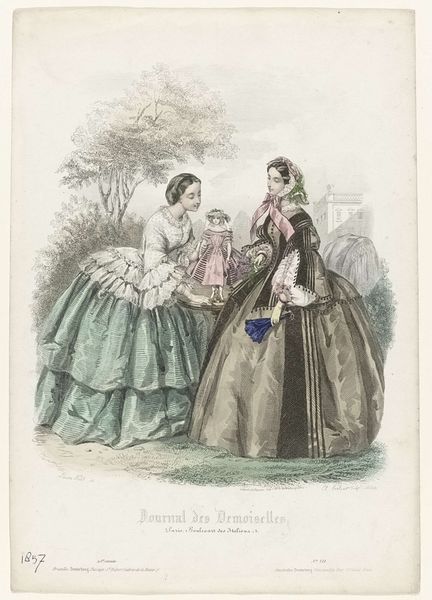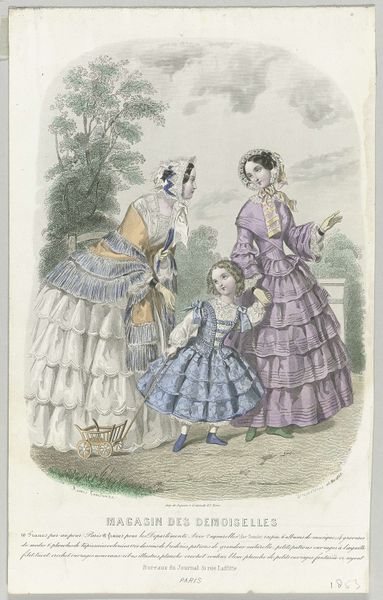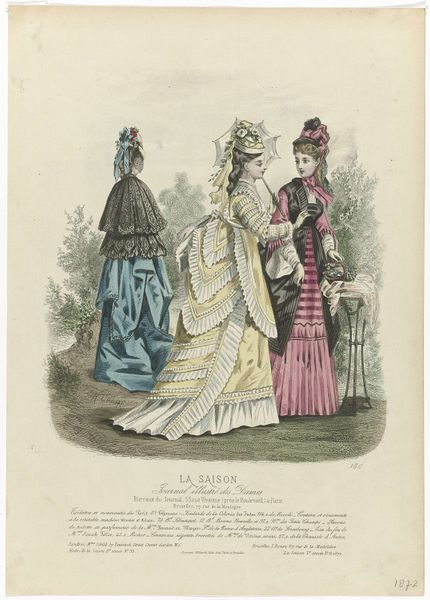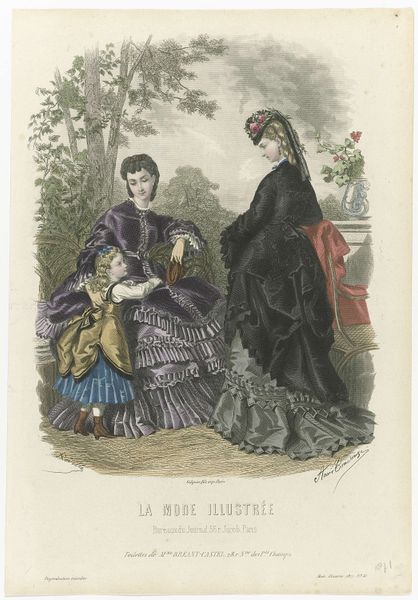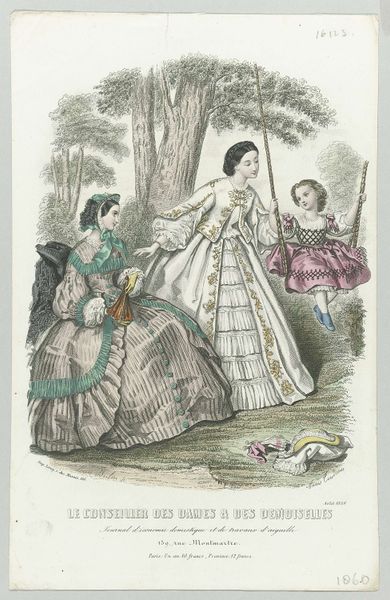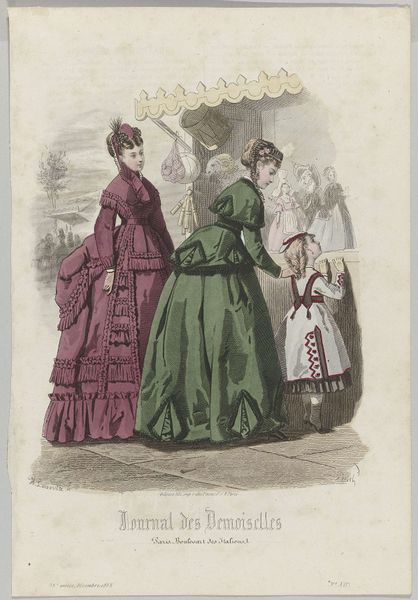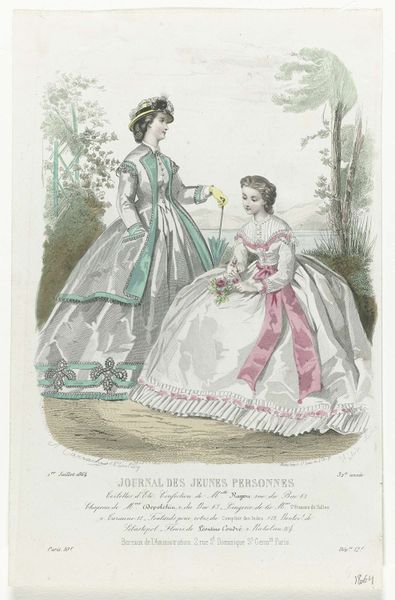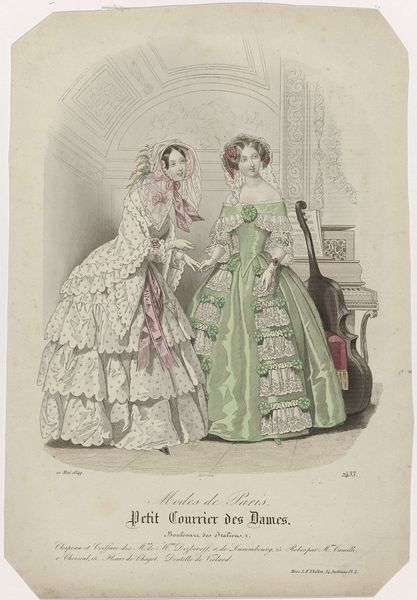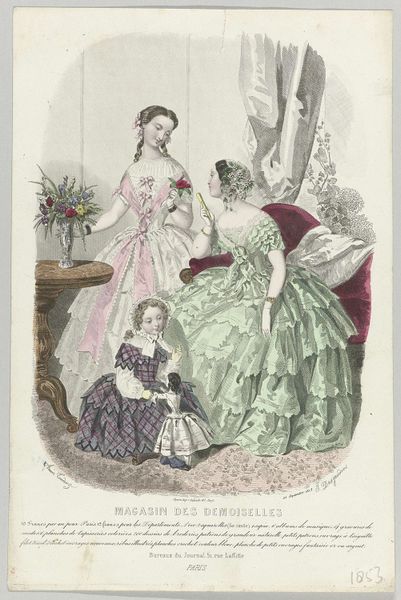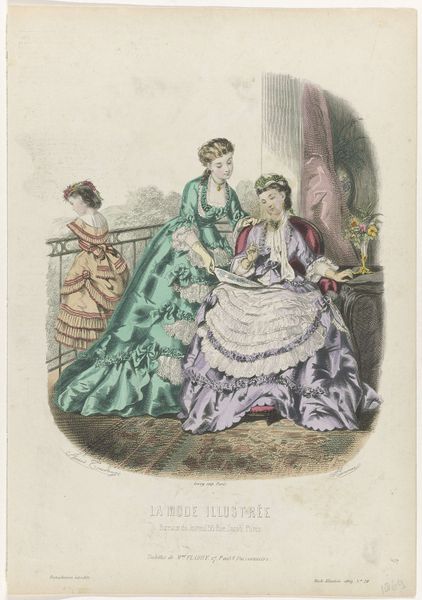
Journal des Demoiselles et Petit Courrier des Dames Réunis, Août 1873, No. 3903 : Etoffes des Magasins (...) 1873
0:00
0:00
Dimensions: height 262 mm, width 171 mm
Copyright: Rijks Museum: Open Domain
Curator: Here we have a print entitled "Journal des Demoiselles et Petit Courrier des Dames Réunis, Août 1873, No. 3903 : Etoffes des Magasins...", created by Paul Lacourière in 1873. The medium is listed as lithograph. What are your initial thoughts? Editor: There's an immediate impression of feminine delicacy, almost excessively so. It feels constrained, yet there's an undercurrent of expectation and, dare I say, confinement within social dictates. All of that lace! Curator: The lithographic process allows for fine detail, replicating the intricacies of those very fabrics. The title points us directly to the means of material culture, highlighting the magasins—department stores—and their crucial role in shaping desire and consumption. We also have references to production, to tailors and sewing. Editor: Indeed, observe the repeated floral motifs. Flowers, parasols, ribbons— all carefully coded emblems. It whispers of innocence and youth, but also of carefully cultivated artifice. The two older women and the child all together creates a kind of before, during and after portrait. Curator: Think of the labor that goes into producing those textiles, and then reproducing them in print! We're witnessing the birth of a mass-produced aesthetic, driving both aspiration and accessibility to new levels. The print would have offered patterns and instruction. The democratization of dress is no small matter. Editor: It is a potent expression of idealized femininity, but one that’s deeply entwined with its historical moment. Even that carefully rendered landscape, suggesting idyllic nature, only amplifies the artifice. These women and girl exist within a very defined and proscribed ideal of femininity. Curator: Precisely. The image is more than just a pretty picture; it's a document revealing how material conditions shaped lived experience and artistic production itself. It demonstrates an awareness of design and craft production on behalf of the maker, the artist, Paul Lacouriere. Editor: I come away with a stronger understanding of the emotional register of the time – what it meant to be a woman, represented, adorned and circumscribed within these printed lines and elaborate folds of fabric. The language of the materials itself echoes those confines. Curator: Absolutely, and the fact that this was widely disseminated speaks volumes about the reach of these industries. An artful reproduction of design’s impact in everyday lives.
Comments
No comments
Be the first to comment and join the conversation on the ultimate creative platform.
